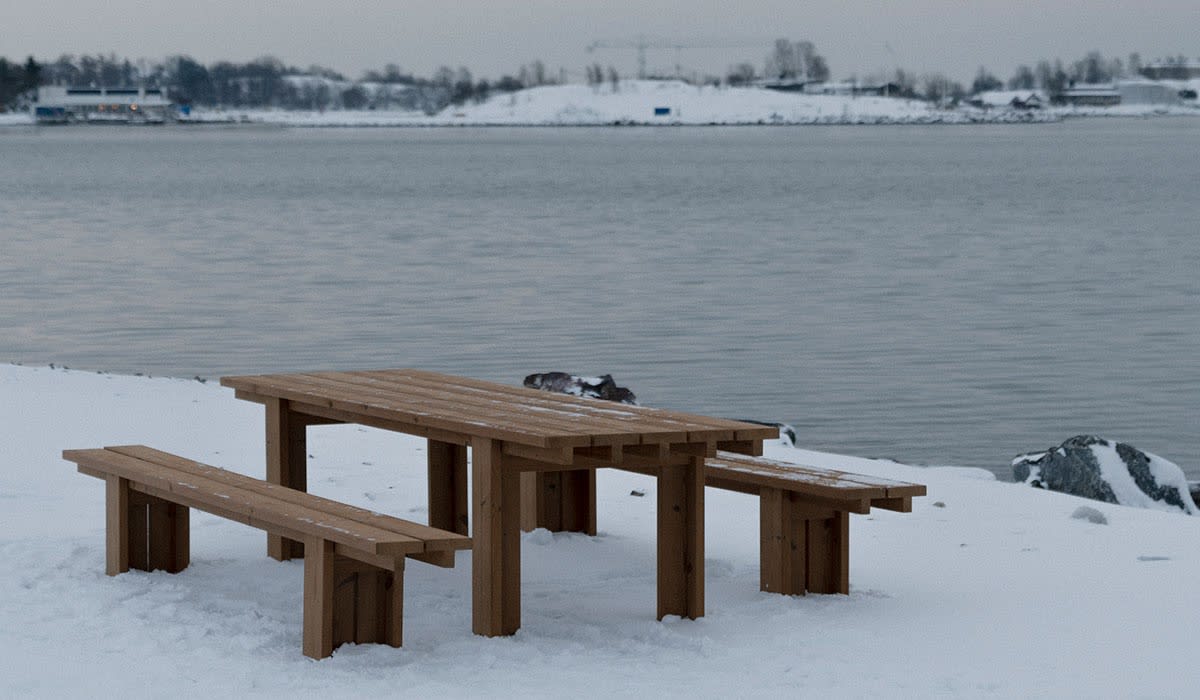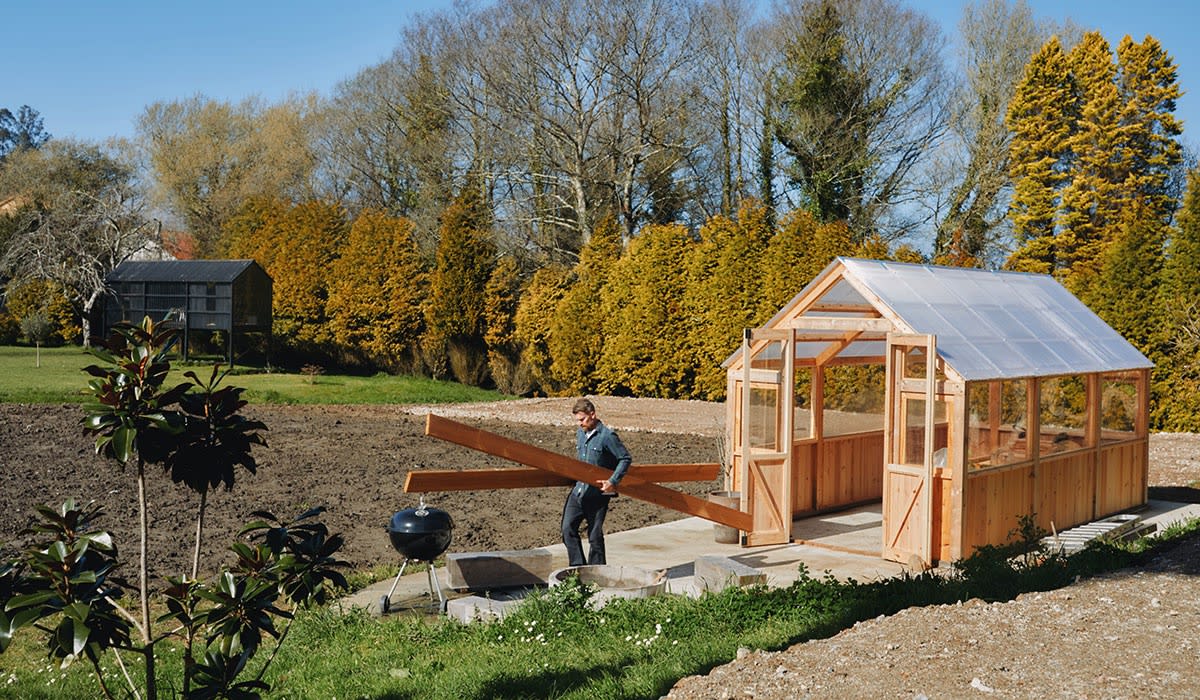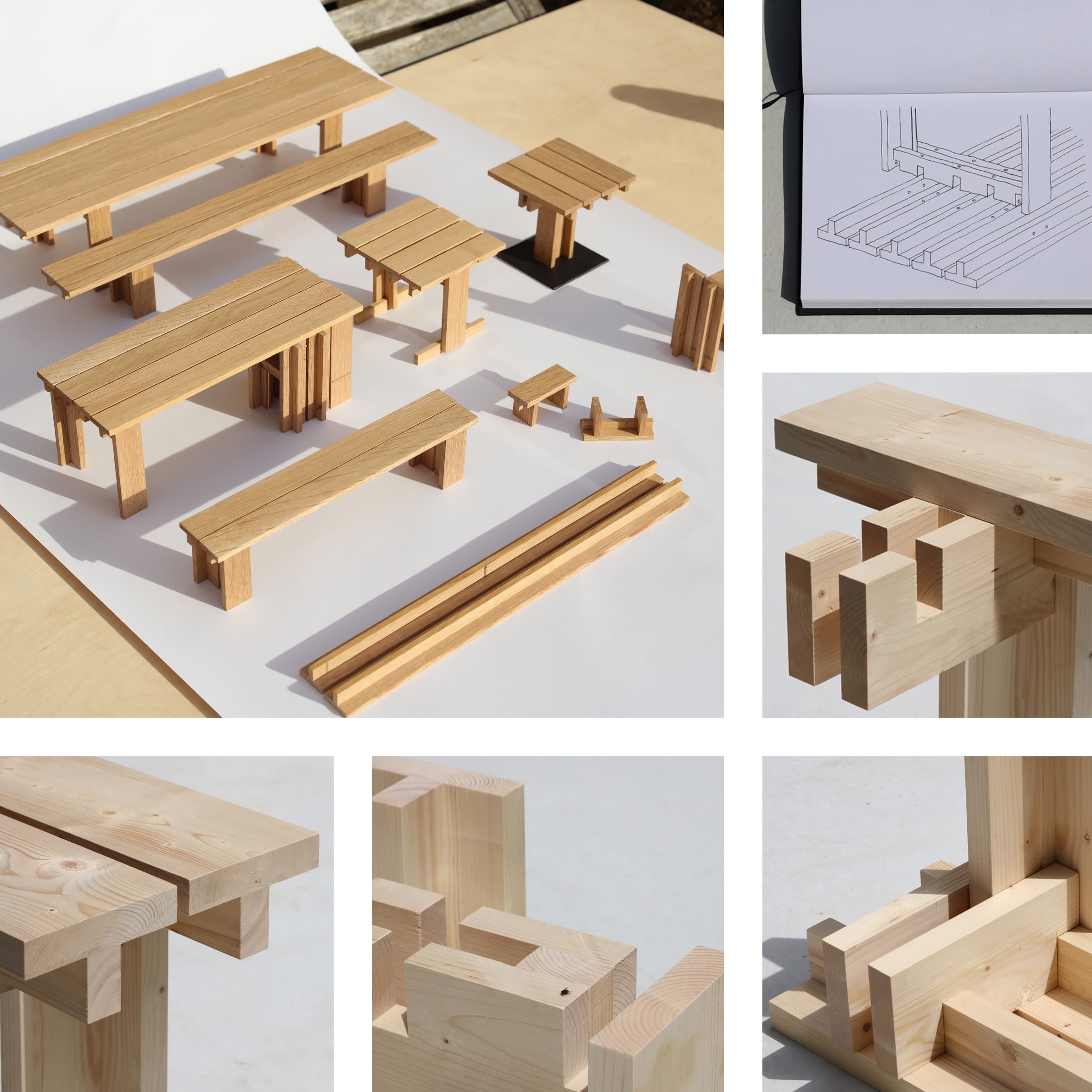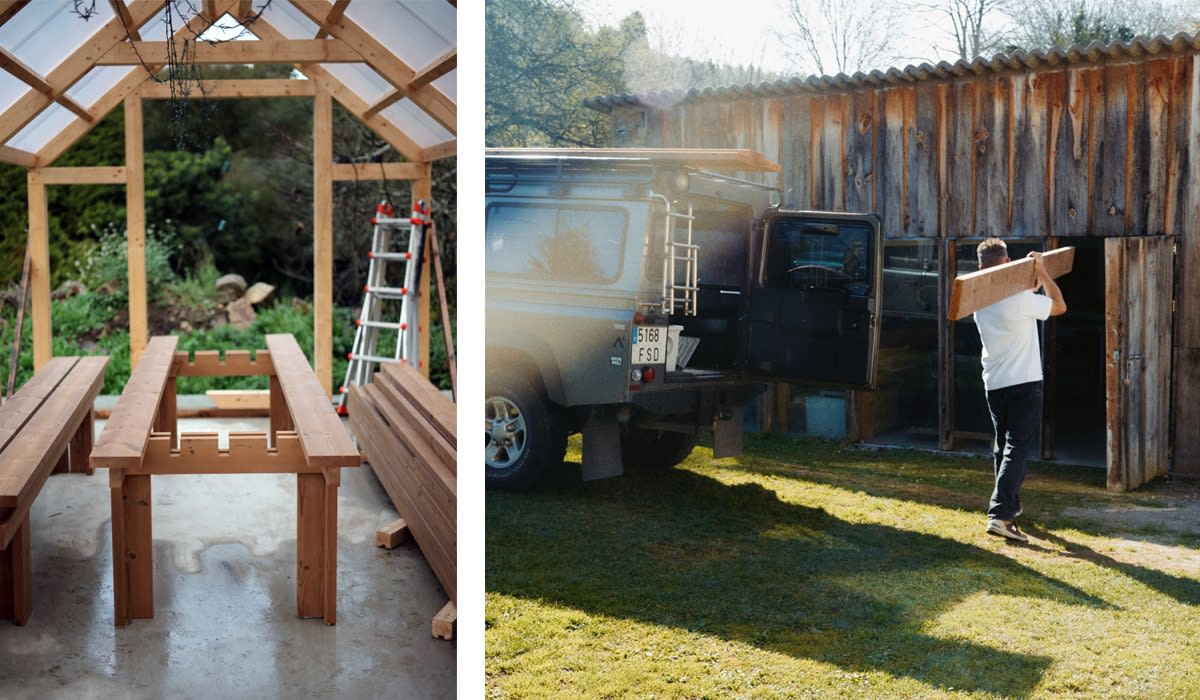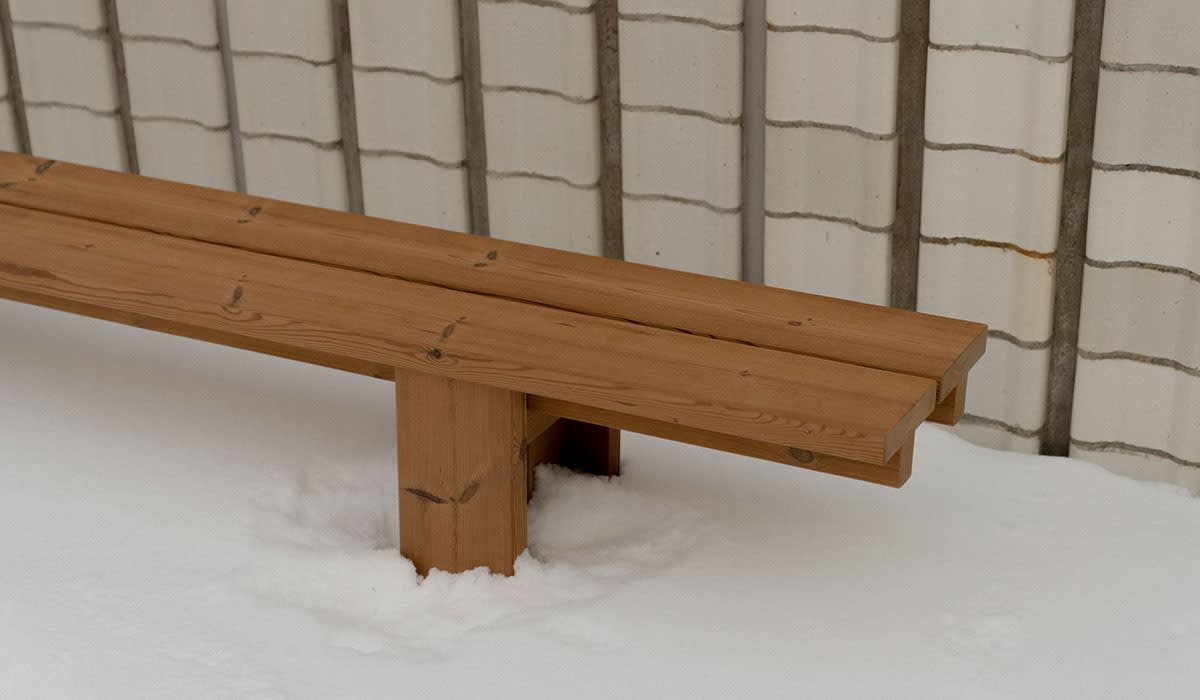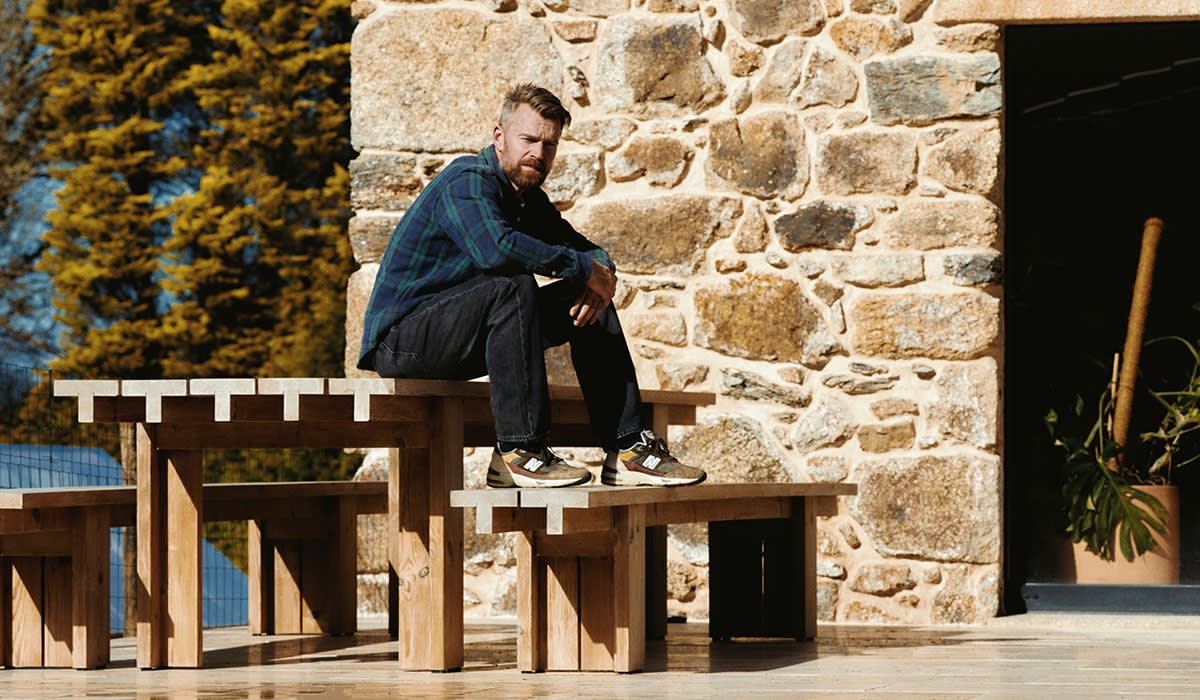-
Carefully crafting wooden objects by hand is a much-loved pursuit of Danish designer Henrik Tjaerby, yet the economy and efficiency of industrial design is his passion too. Tjaerby brings these two alternate methods of making together in his furniture designs and describes the process as the by-product of a ‘50/50’ approach; craft and engineering combined.
What better match, then, for Vaarnii where craft skills regularly run alongside hi-tech processes in their pursuit of a modern vernacular. Tjaerby’s first design for Vaarnii is Osa, a series of outdoor furniture that perfectly demonstrates these shared values.
Laura Houseley talks to Henrik Tjaerby on behalf of twentytwentyone to discuss his design process and collaboration with Finnish design studio Vaarnii as his outdoor series, Osa, launches this March.
-
Q+A
Laura Houseley Tell me where you are at the moment.
Henrik Tjaerby I am from Denmark, but I currently live in Spain, in a place called Galicia in the north-west. I’ve been here for around 4 years now. It was never the plan, though, to stay here. I thought I would stick around for about two years, maximum, and go back to London where I was living before. But I am still here.
Henrik Tjaerby at his home studio. © 2022 Henrik Tjaerby
LH And you worked at Tom Dixon previously in London?HT Yes. I worked with Tom whilst he was Creative Director of Artek – that was when the Finnish connection began. At the time Tom wanted to try to do something new with that huge icon of Finnish design. We produced a range made from bamboo and I went to live in Japan for four months, setting up a factory there.
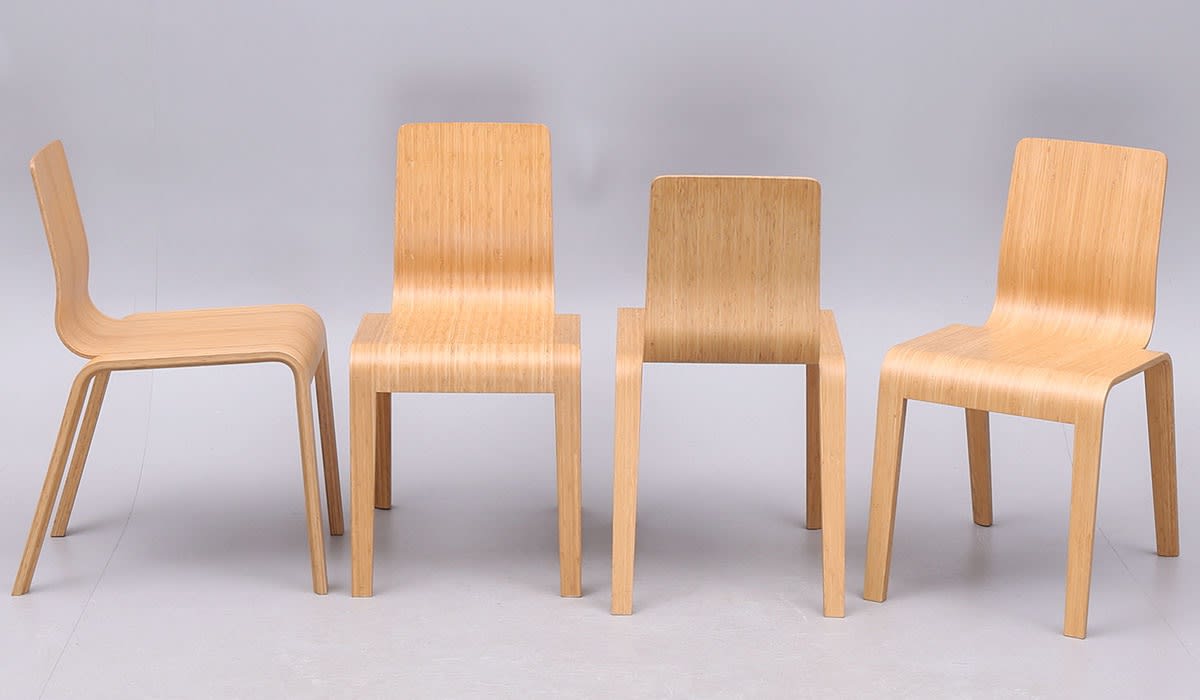
Bambu Collection by Artek Studio/Henrik Tjaerby 2007/8
LH So you have some experience on working with Finnish design brands?
HT Yes. It was there that I met Antti (Hirvonen, Co-Founder of Vaarnii). After that I worked for Zara Home in Spain.
LH And now you are back to working as an independent designer? Tell me a little about that.
HT I would say I am an industrial designer – that’s my formal education anyway – but I work in a way that is closer to that of a ‘maker’. Which maybe sounds like a bit of a contradiction because traditionally people tend to be either/or. But I pretty much spend 50% of my time in each field. I don’t think the border is so defined between those two worlds anymore.Tjaerby's design process; sketch book, maquette models of the Osa collection and details of the T-Profile joints.
© 2022 Henrik Tjaerby
LH Have you always worked in that way?
HT Back home in Denmark, design education is very much a hands-on experience. At my school, we had a fully functioning wood workshop and we were left to use these facilities however and whenever we wanted, it was the best playground ever. So, I’ve been hands-on from the beginning. I really like to know how things are made and I love any kind of craft – not just woodworking, but anything. This is something I really loved about my position at Zara Home; I got to meet the most amazing craftspeople and so much of what we produced was handmade.
LH Tell me about this project with Vaarnii. Where did the idea to create a series of outdoor furniture come from?
HT Vaarnii briefed me to design outdoor furniture because they had noted that there is a huge gap in the market. So much outdoor furniture is teak, classic-looking… Vaarnii wanted something altogether different in pine and contemporary. I quickly started looking at heat-treated pine. It is a material that is increasingly used for cladding and outdoor architecture.
LH But only for those applications, right? And not, until now, for furniture. Why is that?Heat-treated pine, T profile sections. © 2022 Vaarnii.
HT I just don't think people had thought of it. Also, to use pine for an outdoor design, it is necessary to use a bit more volume of material, which maybe other brands were not interested in. I looked at prefabricated structures; beams and things that have an inherent strength to them; engineered shapes rather than planks of woods.
LH And how did that translate into the final design for the Osa series?
HT We found a timber that was already being produced in Finland using an innovative process of heating wood. This reduces its resin and moisture content, stopping it from warping and twisting. It also has the added bonus of making the timber lighter – this of course makes it easier to work with. I wanted to try to reduce labour further by working with existing prefabricated profiles. There was a catalogue of available off-the-shelf components and I landed on this T profile.The Osa Table in the construction process at Henrik's studio in Spain © 2022 Henrik Tjaerby.
LH Because of its strength?
HT The T-shaped profile lends the design a lot of strength and stability, when the furniture is exposed to the elements you don't want it to twist and warp. It gives the opportunity for a big expanse, so really long tables are possible. We simply use a different number of ‘T’s’ for the Osa benches and tables and cut them where we need to, so this is a modular design essentially, that generates little waste. All the T profiles sit on top of a trestle. It’s quite exceptional, really, to achieve such strength and stability with such a light wood.
LH And the heat-treatment is sustainable?
HT The process is like baking bread. It uses only heat and the wood is treated all the way through, unlike the chemical treatments that are normally added to other outdoor wooden products like decking, fences etc. In this process the wood is completely weather-proofed because the cellular structure of the wood has been permanently changed.
LH What about fixings?
HT Just a few screws, the T sections do most of the work. It is very low tech really.
LH So, low tech but hi tech, crafted but engineered?
HT Yes! Exactly!Osa table construction
Video © Henrik Tjaerby
“Although Osa is complicated in some ways – in its engineering – it is really very straightforward, very genuine, very recognisable.”
-
LH You mentioned earlier that it is very good to be able to ‘read’ a design. It is certainly true here; Osa is a very readable design that makes complete visual sense. It’s very logical.
HT It’s like if you ask a kid, “Can you draw a car?” they will always draw a Volvo from the ‘80s. Although Osa is complicated in some ways – in its engineering – it is really very straightforward, very genuine, very recognisable, which was really important to me because I think everything Vaarnii has done so far is so honest. These objects, you just get them straight from the box and they do exactly what they look like they should; it's an honest piece of furniture.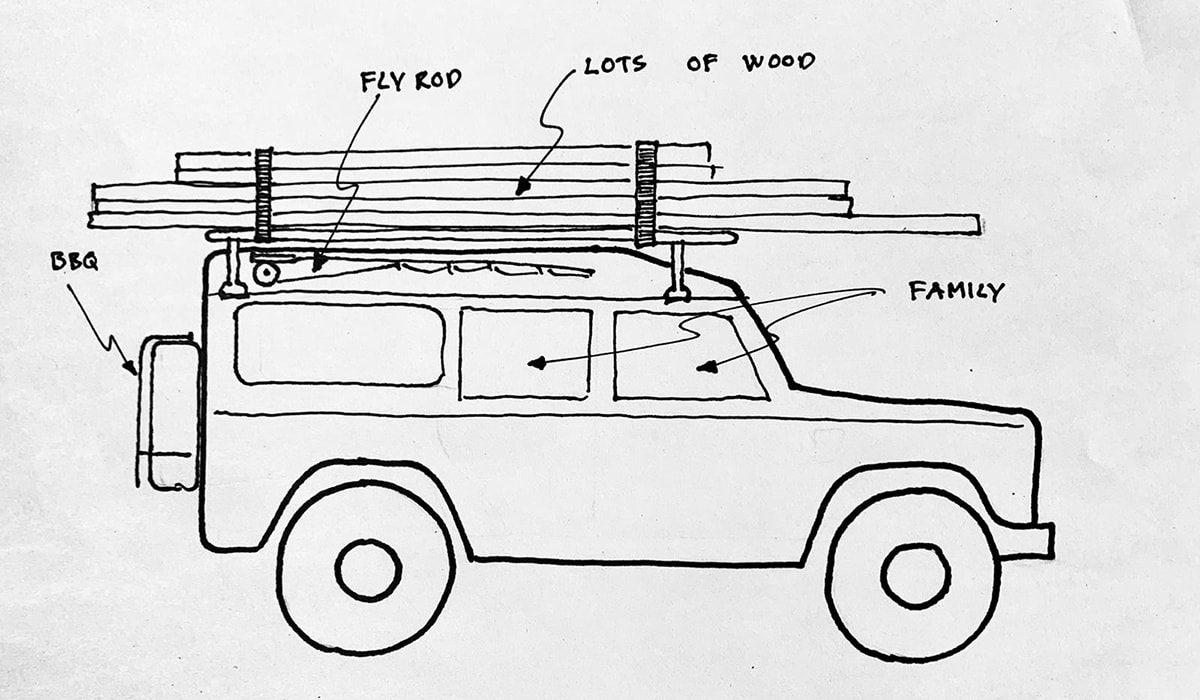
Can you draw a car? © 2022 Henrik Tjaerby
Henrik Tjaerby can currently be found, mostly, in his sunny Spanish studio, from which he is simultaneously producing hand-crafted wooden designs and continuing his collaborations with international design brands. Further designs for the Osa outdoor range will be launched soon.
-
Osa Outdoor series
By Henrik Tjaerby for Vaarnii
Osa Collection from £1,200
-
Many thanks to Henrik Tjaerby, Laura Houseley and Vaarnii.
Danish Industrial designer and maker, Henrik Tjaerby, is the founder of Henrik Tjaerby Design and has previously worked as a Senior Designer at Artek and Tom Dixon, and later a Designer Manager at Zara Home.
@henriktjaerbyLaura Houseley is the Editor-in-Chief of Modern Design Review, a former senior editor at Wallpaper* Magazine, Laura contributes to Tank, The Financial Times, Arena Homme and other publications.
@modern_design_reviewFounded by Antti Hirvonen and Miklu Silvanto in early 2021, Vaarnii seeks to redefine Finnish design, offering a new vernacular. To create enduring, honest objects produced in Finland with locally sourced materials. Combining craft and technology, Vaarnii presents a brutal yet sophisticated aesthetic; their debut collection made almost exclusively in Finnish pine.
@vaarnii_finland
